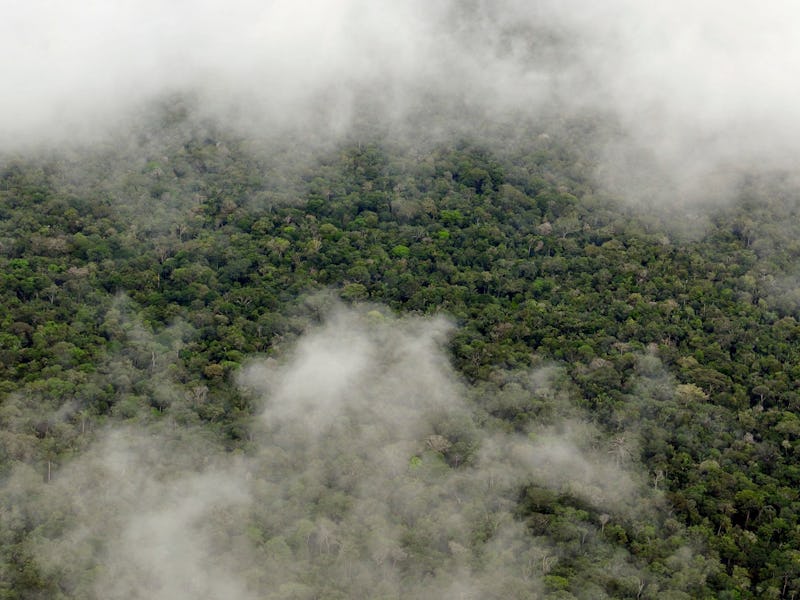The Amazon Makes its Rainy Season and is in Danger, Says NASA Study
A mystery about the Amazon's rainy season has been solved.

NASA scientists have finally solved the mystery of why the Amazon’s rainy season isn’t timed like those of most tropical regions. On Monday, the agency announced the completion of a new study in which researchers discovered that the rainforest remarkably creates its own wet season, but that recent deforestation inhibits its ability to do so.
Shifting monsoon and trade winds are usually what triggers tropical rainy seasons, but scientists have long known that the Amazon’s seasonal changes — which occur in mid-October, two to three months before these wind shifts — must have a different explanation.
NASA researchers have now found the answer after using satellite instruments to study isotopes in airborne water vapor above the forest.
Heavy isotopes don’t evaporate as easily as lighter isotopes, so vapor arising from bodies of water contains less of the heavy isotope deuterium than the water itself does. However, transpiration — the evaporation of water from leaves — is different; heavy and light isotopes are equally able to vaporize through this process.
The researchers detected an abnormally large amount of deuterium in the Amazon’s vapor, suggesting that the rain clouds above the forest didn’t blow in from remote bodies of water. The scientists concluded that the vapor must instead have come from the forest’s own plants.
Trees in a Brazilian section of the Amazon rainforest.
That means that the rainforest’s vegetation sucks water out of the ground and transpires it into the air from there. The Amazon’s plants experience a spike in growth and transpiration before its rainy season starts; more research is needed to understand what prompts the increase.
This process is a great example of the Amazon’s famous circle of life ecology. However, it also means that when serious changes occur to the rainforest’s vegetation, its rainy season is also affected. And guess what’s been happening on a large scale in the Amazon for over 50 years? That’s right, deforestation.
When humans cut down trees in the Amazon, fewer trees are left to create the moisture necessary for the seasonal shift. NASA researchers suspect that this is why the rainforest’s wet season has gotten shorter in recent years. If it gets too short — less than five to seven months — the forest may not experience enough rain to maintain itself, in which case “the region will transition from forest to grassy plains,” says the press release.
A horse stands in a deforested section of the Amazon in Brazil.
So, as cool as it is that the Amazon creates its own rainy season, that also means that any serious interference into the forest’s ecology will set off a vicious cycle in which the the lack of trees curbs rainfall, and the lack of rainfall kills trees.
“The fate of the southern Amazon rainforest depends on the length of the dry season,” says Rong Fu, a leader of this research, “but the length of the dry season also depends on the rainforest.”
If the Amazon is destroyed, it won’t just affect the surrounding regions. The press release notes that it could “potentially disrupt rainfall patterns as far away as Texas.” Perhaps this new insight into how the Amazon maintains itself will motivate people to fight against its deforestation.